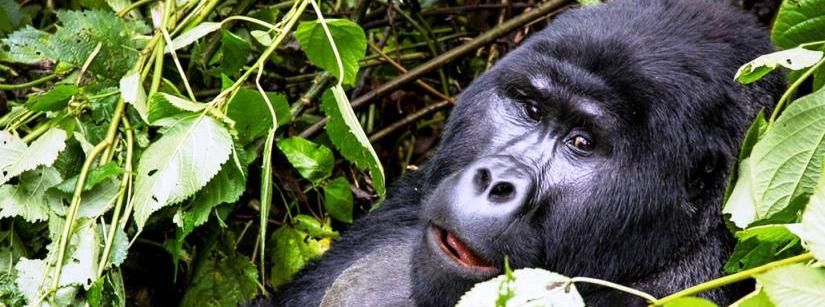Gorilla Trekking vs. Gorilla Habituation: Difference between gorilla trekking and gorilla habituation. Exploring the Distinctive Wildlife Experiences. Gorillas, the majestic and enigmatic creatures inhabiting the lush rainforests of Africa, have long captivated the hearts and minds of adventurers and conservationists alike. Two distinct ways of engaging with these incredible creatures have emerged: gorilla trekking and gorilla habituation. While both experiences offer unparalleled encounters with gorillas in their natural habitat, they differ significantly in terms of objectives, duration, interaction intensity, and overall impact on conservation efforts.

Gorilla Trekking: A Glimpse into the Gorilla Kingdom
Gorilla trekking, often referred to as “gorilla tracking,” is a well-established and sought-after adventure that allows tourists to venture into the heart of the rainforests to observe gorillas in their natural environment. Trekking groups, usually limited to a maximum of eight visitors, embark on guided expeditions led by experienced park rangers. These treks, available in select national parks across Africa, including Bwindi Impenetrable National Park in Uganda and Volcanoes National Park in Rwanda, typically last between 1 to 6 hours.
The Experience
Gorilla trekking is characterized by its unpredictable nature. Trekkers traverse dense vegetation, rugged terrain, and sometimes steep slopes, following the clues left by trackers who monitor gorilla movements daily. The goal is to locate a gorilla family, observe them for a limited time (usually an hour), and then retreat to minimize disturbance. This limited interaction aims to protect the gorillas from excessive human interference while still granting visitors an unforgettable glimpse into their lives.
Gorilla Habituation: An In-Depth Engagement with Nature’s Giants
In contrast, gorilla habituation offers a more immersive and prolonged experience, allowing participants to be part of the process of habituating wild gorilla groups to human presence. Habituation, an intricate and delicate process, aims to make gorillas comfortable with the presence of humans for research, monitoring, and ecotourism purposes.
The Habituation Process
Gorilla habituation is a painstakingly gradual process that takes several years. Expert researchers and trackers spend extended periods near gorilla families, gradually decreasing the distance between them and the gorillas. Habituation requires patience, sensitivity, and deep understanding of gorilla behavior. The ultimate goal is to enable tourists to spend extended periods (up to 4 hours) observing gorillas without causing undue stress or disturbance.
3 day fly in gorilla habituation experience in Bwindi
5 Day Gorilla habituation and chimp trekking safari
3 Day Bwindi gorilla habituation experience through Kigali
3 Day Gorilla habituation experience road tour
How to Book a Gorilla Habituation Experience Permit
Conservation Implications
One of the key distinctions between gorilla trekking and habituation lies in their conservation impact. Gorilla trekking generates substantial revenue for national parks and local communities, incentivizing conservation efforts by demonstrating the economic value of gorilla habitats. However, the limited interaction time and relatively larger number of visitors in trekking groups raise concerns about the habituation of gorillas to human presence, potentially disrupting their natural behaviors.
Sustainable Ecotourism
Gorilla habituation, on the other hand, prioritizes a more gradual approach to human interaction. While it might not generate the same immediate revenue as trekking, it ensures a more comprehensive understanding of gorilla behavior and ecosystem dynamics. This knowledge can guide more sustainable tourism practices and enhance long-term conservation strategies.
Tourist Experience and Expectations
Tourists embarking on gorilla habituation experiences should be prepared for extended periods in the forest, which requires physical endurance, patience, and an inquisitive mindset. Habituation experiences are tailored to those seeking a deeper connection with gorillas, as they witness various aspects of gorilla life, including feeding, social interactions, and daily routines.

Conclusion: Balancing Conservation and Exploration
In the world of gorilla conservation and ecotourism, both gorilla trekking and gorilla habituation play vital roles. Gorilla trekking offers a thrilling yet controlled encounter with these magnificent creatures, providing essential funds for conservation efforts. On the other hand, gorilla habituation permits a deeper connection. Therefore this contributes to a more profound understanding of gorilla behavior and ecology.
Finding the Middle Ground
To ensure the continued survival of gorillas and their habitats, a balanced approach is essential. Conservation organizations, governments, and tour operators must collaborate. This is to establish sustainable practices that safeguard gorilla populations while providing meaningful experiences for visitors. By recognizing the nuances between gorilla trekking and habituation. We can work towards harmonizing the interests of conservation, exploration, and also responsible tourism. This is in the quest to protect one of our planet’s most remarkable species.







